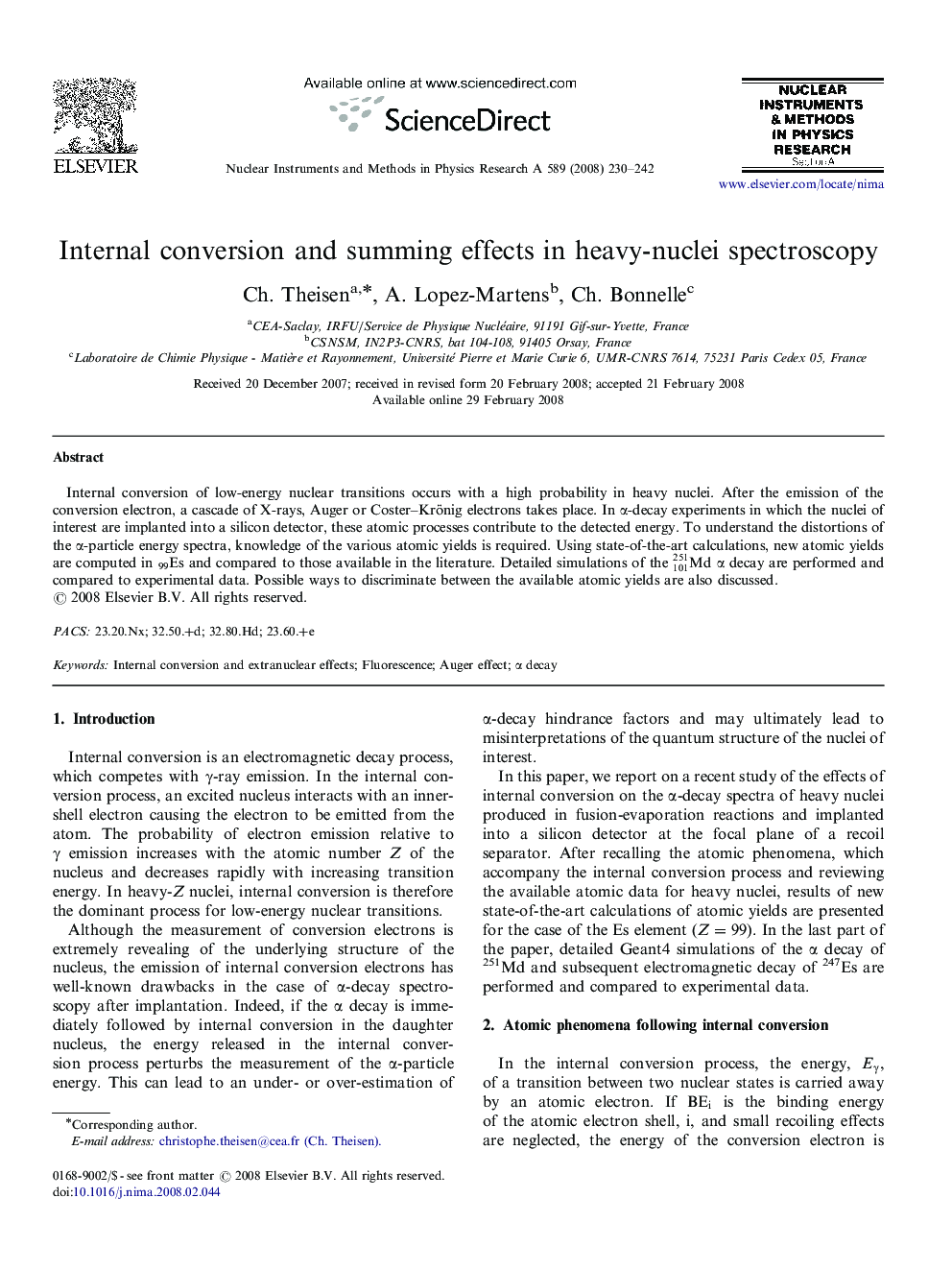| Article ID | Journal | Published Year | Pages | File Type |
|---|---|---|---|---|
| 1829551 | Nuclear Instruments and Methods in Physics Research Section A: Accelerators, Spectrometers, Detectors and Associated Equipment | 2008 | 13 Pages |
Internal conversion of low-energy nuclear transitions occurs with a high probability in heavy nuclei. After the emission of the conversion electron, a cascade of X-rays, Auger or Coster–Krönig electrons takes place. In αα-decay experiments in which the nuclei of interest are implanted into a silicon detector, these atomic processes contribute to the detected energy. To understand the distortions of the αα-particle energy spectra, knowledge of the various atomic yields is required. Using state-of-the-art calculations, new atomic yields are computed in 99Es and compared to those available in the literature. Detailed simulations of the Md101251αα decay are performed and compared to experimental data. Possible ways to discriminate between the available atomic yields are also discussed.
